Poorly flushes the toilet: causes and solutions to the problem
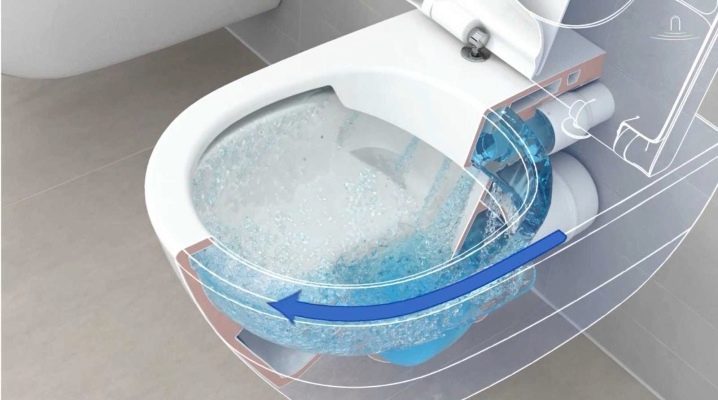
Today there is a toilet bowl in every house or apartment. Every day manufacturers of toilet bowls improve and supplement this device. They come in different sizes, shapes and colors, and also differ in the device for discharging, draining and filling water. But there are situations when flushing starts to deteriorate. It is necessary to familiarize yourself with the common breakdowns of the toilet system in order to fix the problem yourself.
Causes
A clogged drain is one of the reasons the toilet may stop flushing. If the drain is clogged, then the water from the tank runs without pressure and slowly. There is a small hole in the tank, which over time becomes overgrown with limescale deposits, which interfere with the normal flow of water. Debris falling into the tank is also quite common. Typically, these are pieces of an old rubber hose that attaches to the toilet float. But if the toilet does not have a lid, then a completely unexpected blockage can be the reason.
Damaged enamel is also a very common cause of toilet flush deterioration. Roughness, cracks, scratches and chips prevent waste from completely falling into the sewer system. Dirt builds up when the button is pressed and over time it interferes with the water flow.
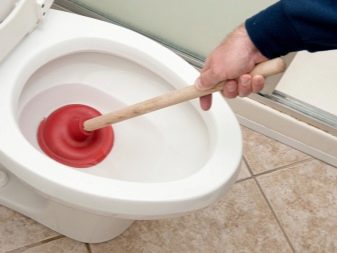

It so happens that the toilet is new, but already does not work well. Most likely, the problem is in the siphon of the toilet itself. The funnel-shaped toilet bowl comes with a sloped drain or in the center. This means that the drain is close to the edge of the bowl. Another reason may be the location of the drain holes. The closer the hole is to the center of the bowl, the lower the quality of the flush. The best choice when buying a toilet will be a model with a capillary flush, since in this version the water washes the entire surface of the bowl. Water enters the bowl through a variety of holes, thereby ensuring a high-quality flush. However, if initially the toilet flushed well, then you should pay attention to the reasons described above.
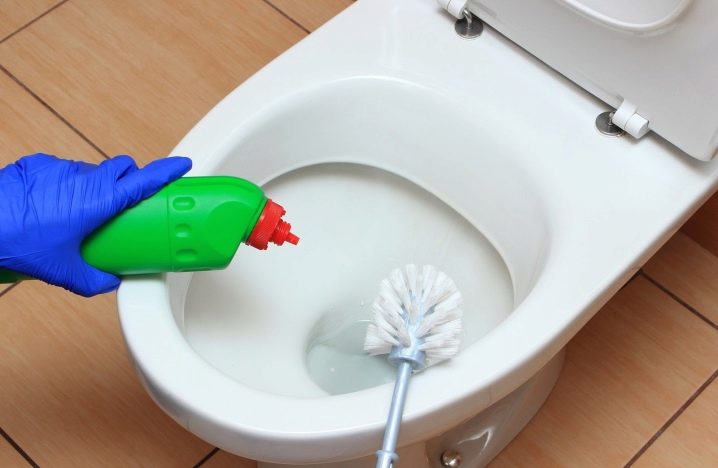
Another reason for poor-quality flushing is a lack of water in the toilet cistern. Naturally, a couple of liters of water in the tank cannot provide a high-quality flush. Water shortage is possible due to the float valve, which turns off the water earlier than necessary. In old toilets, the float itself may be the culprit. However, it often happens that the water does not have time to get into the tank, as it goes to the channel. It also happens that water does not enter the tank at all. Most often, this problem occurs with steel pipe owners, as they become clogged with limescale and impede the flow of water.
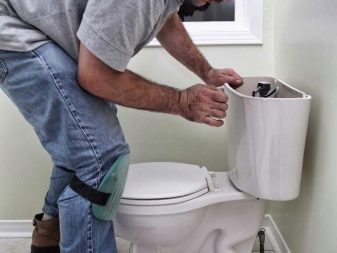
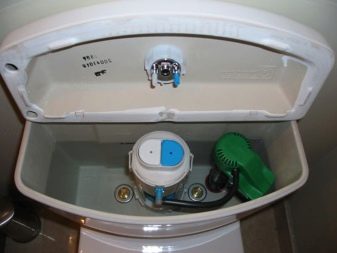
In addition to all the above reasons, in private houses, the reason can also be the poor-quality layout of the sewer itself. In a private house, the problem with flushing may also be due to the lack of a drain pipe. Simply put, due to the lack of ventilation for sewerage, the accumulated gases have nowhere to go. As a result, they begin to accumulate and create an air lock, which interferes with the uniform flushing of water. In addition, if the accumulated gas finds a way out on its own, then all residents of the house will definitely know about it, since a very unpleasant smell of sewage will appear, which has absorbed not only the gases from the toilet bowl, but also the exhaust from the washbasin and bathtub.
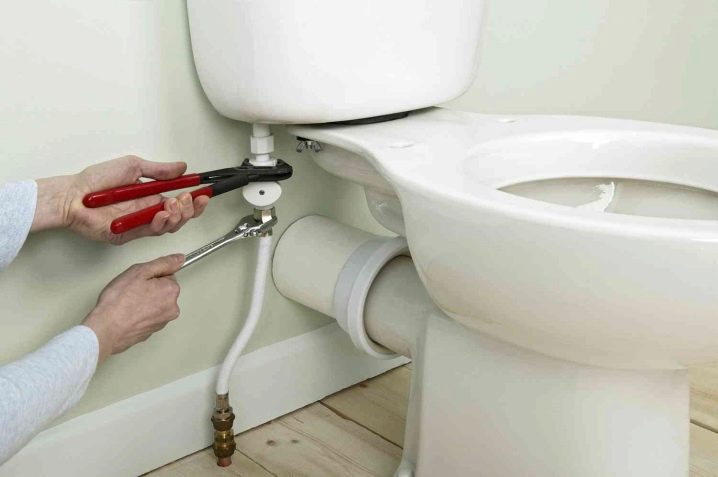
Also, the reason may be incorrect location and slope of pipes. Plumbers could simply do their job poorly, without adjusting and checking the correct installation of the toilet, also pressing the water drain button. A fairly common point is the incorrectly selected diameter of the sewer pipe.If in a private house not a central sewage system is installed, but a cesspool, then this can also be a clear sign of why the flush does not work well. It is always necessary to look for reasons and solutions to why water is not collected, feces do not drain, water does not drain. Paper may linger in the circle if the water does not pass well.
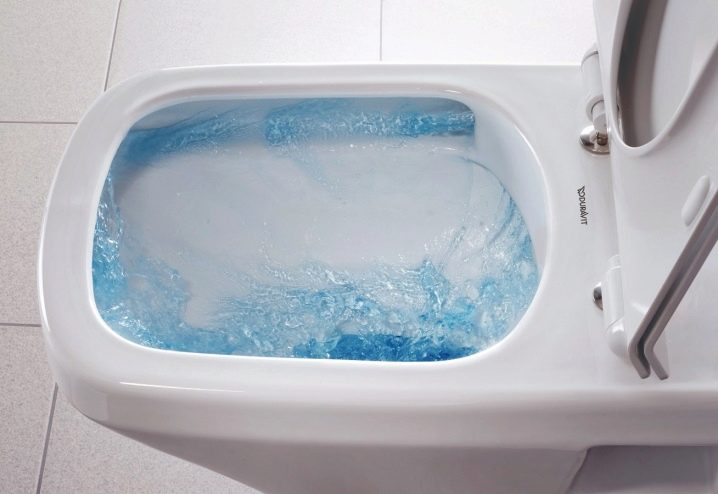
Solutions
The first step is to look under the pear. Perhaps the cause of the blockage will be visible immediately, which will make it easy to correct the situation. If the cause is lime deposits, then you can use one of several recipes to clean your entire toilet:
- Leave a little less than 1 liter of water in the tank. Then take 100 g of a 5–7% solution of phosphoric acid, pour into the remaining water in the tank, wait 15 minutes and rinse.
- Leave a little less than 1 liter of water in the tank. Pour 0.5 liters of borax and vinegar. Wait 2 hours and drain off the water.
- Leave a little less than 1 liter of water in the tank. Then take 3-4 packs of citric acid and pour into the tank. It is necessary to wash it off after 6-8 hours of inactivity. It is most convenient to carry out this cleaning option in the evening, since the acid can be left in the tank overnight. It is important to note that the tank can be cleaned in this way in one go. But for other parts of the toilet, these procedures must be repeated 3-4 times. By the way, it is for this reason that it is recommended to abandon strong chemical cleaners, as they very quickly spoil the rubber and plastic parts of the toilet bowl.

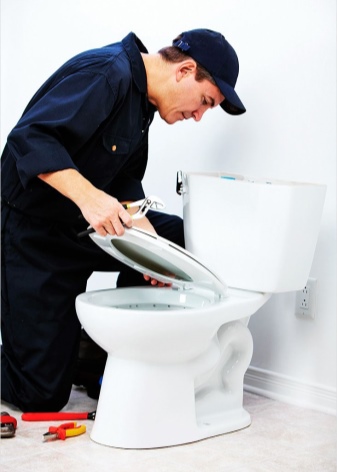
If the reason is the enamel, then the easiest way is to replace a new toilet. Alternatively, you can putty the damaged area or apply new enamel with a special gun. The previously damaged surface must be cleaned. However, it is worth knowing that self-enamel coating is very different from factory painting and will not last long. It is better to calculate how justified the restoration of the toilet bowl is. It may be cheaper to buy a new one.
In the event of a lack of water, if the problem is in the valve, then you need to adjust it and also clean it. If the water goes to the channel, then it is necessary to take a set of measures to eliminate the malfunction. The saddle of the pear may need to be cleaned, or the pear itself may have cracked and lost its elasticity and needs to be replaced. Alternatively, the bolts inside the tank may be damaged and water seeps in through these holes. In this case, either the bolts or the tank fittings are changed.
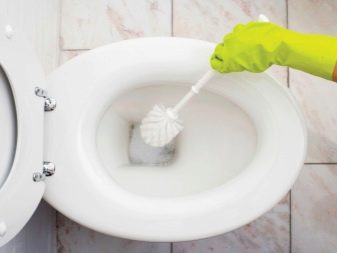
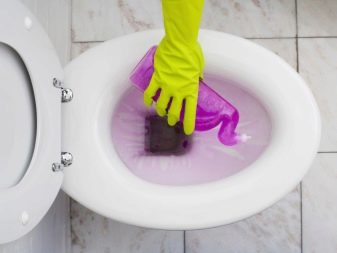
If the water does not flow into the tank at all, you will need to carry out a serious cleaning of the piping to the toilet. To do this, it is necessary to turn off the water for the entire apartment or house. Remove the corrugation leading to the tank. Next, you need to unscrew the screw that cuts off the water on the tank. It is preliminarily recommended to prepare a device for cleaning pipes or make it yourself from a steel string. One end of the pipe is twisted like a brace, and a tiny hook is made at the other end (like a pea on a sewing pin).
It is better to do the cleaning together, since one person will pull the string, and the other will feed the string into the pipe, trying to destroy the blockages that have settled on the walls of the pipe. It is worth noting that as soon as the place of a possible blockage has been passed, you need to substitute a basin, open up the water and make sure that the blockage is removed before pulling out the string. If the water runs out but stops immediately, you should continue to turn the string, slowly taking it out of the blockage. After this procedure, the water flow should be normalized.
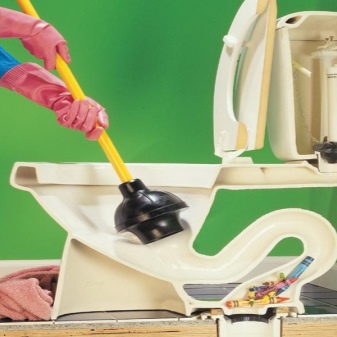
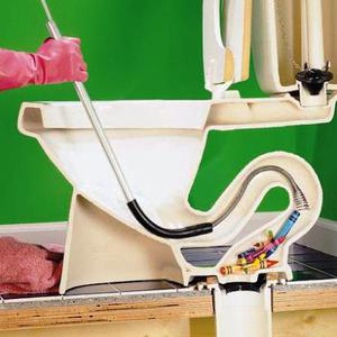
If a cesspool is used as a sewage in a private house, then a well should be opened, where the sewage from the house is drained. If the drain pipe of the pit is just below the water level in the pit, then this is the cause of the problem. If there is no fan pipe, then there are two options. Either install a pipe with an outlet on the roof of the house, or install a vacuum valve. It is not possible to change the slope of the pipe. Here you can propose to reconstruct the entire sewage system, relying on the established building codes.There is another option - to put an electric pump for forced drainage of water.

Prophylaxis
If today we managed to cope with the problem of poor flushing, then this does not guarantee that such a situation will not arise again in the future. That is why it is very important to carry out preventive treatment of the toilet bowl. Lime deposits in the toilet bowl, pipes and cistern will continue to accumulate. It is impossible to exclude this moment, but to prepare in advance, the prevention of the toilet will help.
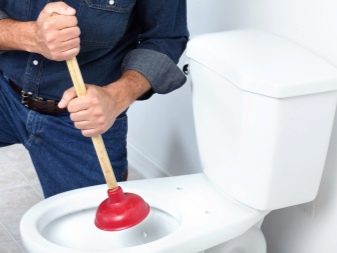
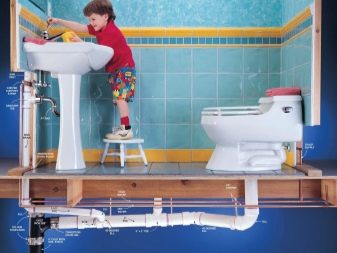
It runs as follows:
- The toilet bowl and the cistern must have a lid in order to limit the ingress of foreign objects into the system, which must be removed in the toilet bowl.
- At least once a month, it is advised to clean the entire system with special chemicals. A special powder is poured into the drain hole, after waiting from 15 to 30 minutes, it is necessary to drain. It is also helpful to clean the toilet with a string from time to time.
- Do not forget about the tank drain device. A regular check of the mechanism's operability and its integrity is essential. In this case, it will be possible to immediately eliminate the resulting malfunction, and even before a more serious breakdown occurs.
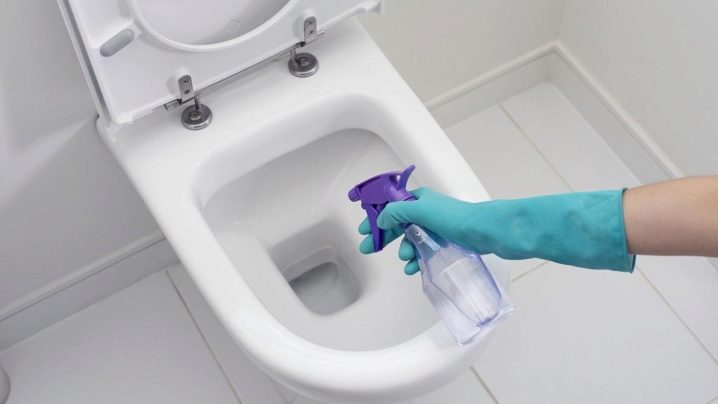
How to choose?
To choose a toilet with a good flush, you need to pay attention to several parameters:
- The location of the tank. The tank at the top is much better than the one at the bottom. The higher the pipe, the greater the water pressure.
- Capillary flush is worse than normal. Capillary flush models are more popular, as water enters the bowl from several sides and washes it completely. However, the back of the bowl contains the least amount of water, which means that this part of the toilet is most susceptible to contamination.
- If there is a visor inside the bowl, then the flush will be more effective, in such a toilet, objects that fall inside quickly sink inside. But it also has a drawback - it's a smell. In such a toilet, the contents lie on the surface before flushing, exuding odors.
- The most ideal toilet bowl is porcelain, as the bowl of such a toilet bowl is perfectly cleaned. Porcelain has a very smooth surface without pores. In second place are glazed earthenware toilets.
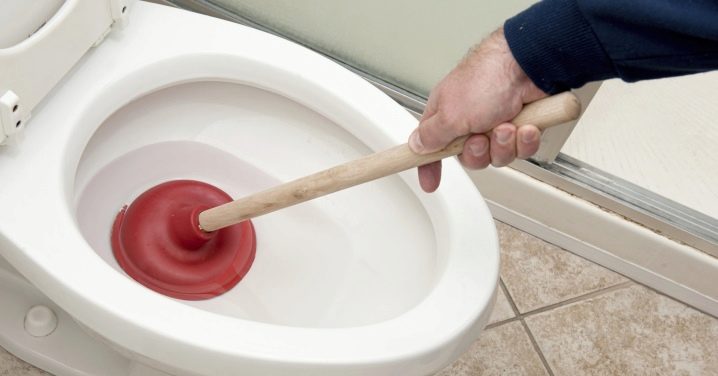
It is worth noting that most of the problems associated with flushing the toilet are solved independently without calls to the house of utilities or plumbers, whose services are quite expensive. However, if there is no confidence in the correctness of the actions or the problem has not been resolved, you should still use the services of professional plumbers.
For information on how to descale the toilet cistern, see the next video.













The toilet did not drain the water completely when the flush button was pressed. When the button was released, the water immediately shut off. He took off the mechanism. The first thing I did was remove (wash away) a centimeter layer of silt from the bottom of the tank. The reason for the early closing was the development of gaps (backlash) in the mechanism. As a result, the cork stroke decreased, and the 5 mm hole in the cylinder, which sets the open time, had to be plugged with a rubber stopper. I didn't have to change anything. After assembly, I screwed the pusher a little into the button so that the tank did not let water in. The check showed that the water began to open with a characteristic sound and leave completely without a trace. It is enough to press and release the button.
The comment was sent successfully.